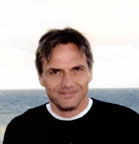Broadcast Engineering for the Digital Age
- Course Description
- Table of Contents
- About the Author
- SBE Recertification Credit
- Enrollment Information
- Preview the Course
- Frequently Asked Questions
Course Description
“The author uses lots of industry standards and relates them very well to the broadcast industry. This is a thought provoking course that guides the project engineer to new methods of managing the unmanageable task of today’s broadcast IT-centric projects.”
– Paul Claxton, CPBE, CBNE; course reviewer
The advent of digital television and the transition to digital transmission, the implementation information technology (IT) laden broadcast infrastructures, and the evolution to file-based production, has precipitated challenges and the need for broadcast engineers to master a new set of technical skills. To matters a little more interesting (and challenging), the emergence of multiple delivery channels – which can be used both for consumer distribution and professional backhaul and contribution – have complicated matters even more. And with business moving from paper to electronic systems for maintaining business information, and with the need to automate the flow of this information and metadata through every area of operations, from rights management, ad sales, traffic, media management, content movement and play to air, the opportunity now exists to integrate all business, creative and media processes into a holistic workflow, streamlining operations to meet the needs of the any content, anywhere, at any time on any device media-multiverse.
As a result, new skills are needed, both technical and communication; teamwork and planning have now come to the fore. A new design philosophy requires the elimination of silos, and that a symbiosis of business, creative and technical considerations, requirements and harmony system integration and media and data flow is adhered to.
This course addresses the challenges of a contemporary technologist who works in the broadcast or media industry and offers techniques to ease the transition from broadcast engineer to media systems engineer. Each lesson or chapter provides practical suggestions and solutions for the digital era.

Table of Contents
- Introduction
- Media Systems Engineering – a New Technical Discipline
- Adapt or die! The Adaptive Media Systems Engineer
- Professional Societies, Trade Associations and Standards Bodies
- Project Management Techniques
- Team Building
- The Planning Process
- Adaptive Engineering and Design
- The Installation and Commissioning Process – Making it so …
- Process Improvement and Organizational Proficiency – Work Smarter, Not Harder!
- Media Systems Engineering for the Real World
- Glossary
About the Author
This course was written for the SBE by member Philip J. Cianci, CSTE. He is the author of High Definition Television – the Creation, Development and Implementation of HDTV Technology, published by McFarland in January 2012. This thoroughly researched work traces the 40-year history of high definition television technology is from initial studies in Japan, through its development in Europe, and then to the United States, where the first all-digital systems were implemented; followed by advances in HDTV technology in Australia and Japan, Europe’s introduction of HDTV, Brazil’s innovative use of MPEG-4 and China’s terrestrial standard.
Cianci’s involvement in the HDTV effort began at Philips Research in the 1980s, where, as a designer, he participated in the development of Advanced Television Systems, culminating in the Grand Alliance HDTV prototype. In 2002 he segued to broadcast operations and completed his initiation holding down the overnight shift at the AT&T Digital Media Center in lower Manhattan. Cianci was at ESPN during the construction and commissioning of the Digital Center and the debut of SportsCenter in HDTV. He has worked for Communications Engineering, Inc. (CEI) as a design engineer, and is currently employed by a major cable television network in New York City.
He has been a member of the SBE since 2002. In addition to membership in SMPTE, he is a participant in the SMPTE Journal Board of Editors. He also belongs to the IEEE and Broadcast Technology Society. Cianci’s first article for Broadcast Engineering magazine was published in 2003, and he was the original editor of the “Transition to Digital” e-Newsletter from 2005 through 2007. He has published two books with Focal Press, HDTV and the Transition to Digital Broadcasting in 2007, and Technology and Workflows for Multiple Channel Content Distribution: Infrastructure implementation strategies for converged production in 2009.
Since 2002, Cianci has been collaborating in the development of an HDTV archive with the Smithsonian Institution. As a multi medium artist, he has documented many HDTV moments in works of art. He is also an experimental algorithmic composer who finds relaxation on a golf course, on a ballroom dance floor, or in a garden.
SBE Recertification Credit
The completion of a course through SBE University qualifies for 1 credit, identified under Category I of the Recertification Schedule for SBE Certifications.
Enrollment Information
To register for the course, click on the link below. You may register using VISA, MasterCard or American Express.
SBE Member Price: $90
Non-Member Price: $135


